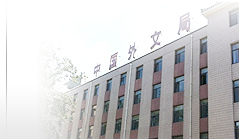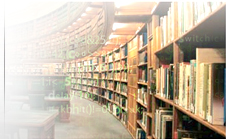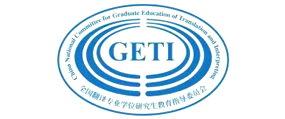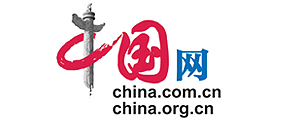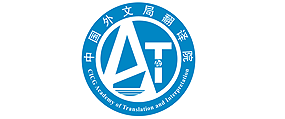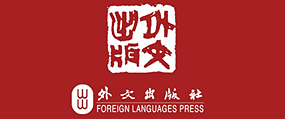目录
译学研究译论以形式/内容收编中国学术话语的反思 庞秀成 5
翻译研究中的“真”、“善”、“美” 申连云 11
译史纵横
论“五四”诗歌翻译对中国新诗内容的影响 汤富华 16
翻译教学
高等学校翻译专业本科教学要求 仲伟合 20
MTI中的翻译理论教学 廖七一 25
业界视点
推动翻译立法,促进翻译行业的健康发展 黄友义 29
把握机遇,积极探索,开创翻译专业学位研究生教育的新局面——全国翻译硕士专业学位教育2011年年会综述 平洪 31
我国的应用翻译:理论建设与教学——第四届全国应用翻译研讨会侧记 方梦之 34
口译研究
以视译促交传——一项基于实证的相关性研究报告 刘进 37
口译中超语言信息探析 李少彦 41
文学翻译
美国文学场中张爱玲《金锁记》的自我改写 游晟 朱健平 45
金庸小说英译研究
——兼论中国文学走出去 罗永洲 51
译技探讨
“非常道”与“非常名”
—— 关于不可言和不可译的翻译 林巍 56
法律文本中shall的问题及解决途径 陈小全 刘劲松 63
书刊评介
认知学与翻译学结合的新起点
——《翻译与认知》评介 邓志辉 68
学术争鸣
中国马克思主义理论及其翻译——思想和实践等同于Ideology和Practice吗? Josef Gregory Mahoney 著 徐洋 译72
产业研究
GILT本地化产业与翻译研究新动向 张莹 柴明 77
翻译考试
谈翻译专业资格(水平)考试的三个衔接 杨英姿 81
自学之友
英译汉:Quicksands(Thomas de Quiencey) 叶子南 译注 84
翻译导读:文学作品的解读与翻译 叶子南 85
汉译英:对陌生人的责任(薛涌) 王维东 译注 89
翻译导读:要达意,更要传神——“对陌生人的责任”英译随感 王维东 92
词语选译
中国译协中译英研讨会讨论成果节选(2011年4月26日) 95
英文摘要 96
信息广角
“中译外─中国走向世界之路”高层论坛征文通知(封底)
2011年全国高等院校翻译专业师资培训二号通知(封二)
全国翻译专业教育与翻译产业发展论坛通知(封三)
中国翻译协会高级笔译/高级口译培训通知(封三)
本刊稿约(33) 本刊邮购信息(62) 会讯(28)其他(71)
中文摘要
译论以形式/内容收编中国学术话语的反思庞秀成 东北师范大学
摘要:西学东渐以来,西学与中学构成了一对矛盾,中西两种话语体系展开竞争,中国的学术话语形成了二元结构。翻译理论中,中国传统学术话语被形式/内容这对根源于西方的术语替代、简化、收编。虽然用这对术语能够帮助理解原有概念,揭示翻译中一些未曾理解的侧面,但在文化重建和现代化的旗帜下滥用也会造成中国本土概念的遮蔽、扭曲甚至退化。本文以形式/内容为例分析翻译理论中西二元结构中存在的问题,同时指出摆脱理论困境的办法之一就是重视“一分为三”的辩证思维,这样才能在国际交流中建设性地维护中国话语立场。
关键词:收编;形式;内容;二元结构;二元对立;一分为三
翻译研究中的“真”、“善”、“美”
申连云 浙江外国语学院
摘 要:我国从古至今的翻译实践可以概括为“求美”、“求真”和“求善”三种模式,分别体现在“文”与“质”、“直译”与“意译”和“归化”与“异化”的论争 中。三种模式的兴替与一定的政治、美学和文化力量紧密相关。我国的翻译研究在跨越了从“求美”到“求真”到“求善”的历程后,变得全面和丰富起来。
关键词:真善美;文质之辩;直译意译之争;翻译伦理
论“五四”诗歌翻译对中国新诗内容的影响
汤富华 中山大学
摘 要:由于中国传统文化“忌死讳欲”的价值取向使得中国诗歌内容极少显现诸如“死亡”、“爱欲”等最本质的生命词汇,而“五四”诗歌翻译带来的诗歌内容将中 国诗歌引致中国传统诗歌不愿也不敢触及的认知领域,表现出来的内容完全不同于传统的感性特征和认知模式。胡适、李金发及徐志摩等新诗先驱通过其自身的诗歌 翻译及新诗创作拓开了全新的叙事疆域,不仅颠覆了文言旧诗的表达内容而且对诗歌书写内容产生了重要影响。
关键词:诗歌翻译;情欲主题;死亡主题;影响
高等学校翻译专业本科教学要求*
仲伟合 广东外语外贸大学
摘要:自教育部批准三所高等学校试办翻译本科专业以来,全国已有42所 高校设置翻译本科专业并已招生培养。本文就《高等学校翻译本科专业教学要求》(试行)制定的背景与目的、翻译专业本科人才培养的目标与人才培养定位、专业 知识与能力构成、课程设置、教学要求、教学原则、教学手段与方法、评估与测试、实践教学等翻译专业人才培养问题进行解读与说明,希望以此能指导和规范翻译 专业的发展。
关键词:翻译专业本科;教学要求;外语教学
MTI中的翻译理论教学
廖七一 四川外语学院
摘 要:在翻译硕士专业研究生的培养中,翻译理论具有什么样的功能,学界似乎存在较大的分歧。对中外相关院校翻译理论课程设置、教学目标和教学内容的梳理可以 发现,翻译理论不仅是翻译实践的指导,而且是现代译员能力的有机组成部分。根据中国翻译教学的实际,笔者尝试提出翻译理论最基本的四个模块:翻译研究范式 的演进、翻译与社会规范、文本功能与翻译策略,以及口笔译质量评估。
关键词:MTI教学;翻译理论;功能与内容;理论模块
以视译促交传——一项基于实证的相关性研究报告
刘进* 安徽工程大学 37
摘 要:视译通常被视为同传训练必要的辅助手段,然而视译训练是否可以引入本科生交传课程存在着争议。本文通过实证方法揭示视译训练与交传训练的关系。研究结 果表明视译训练有助于交传训练水平的提高,且对交传训练中的意义摄取和流畅度影响显著。建议将视译训练纳入本科生交传口译课程,以促进学生交传水平的提 高。
关键词:视译;交替传译;意义单位
口译中超语言信息探析
李少彦 海军装备研究院
摘 要:超语言信息摆脱了传统语法和言语的束缚,以一种间接的方式揭示客观实际。由于译员在口译时,用于记忆、理解和转换的时间非常短暂,加上许多超语言信息 基本只能由听者意会,所以口译中的超语言信息的处理对于许多译员来说是个难点。如何在忠实原文、通顺迅捷的基础上使译文更为得体与传神,如何恰如其分地表 达出说话者隐含在字里行间的真实想法和意图等文字之外的信息,本文从分析超语言信息现象的理据入手,结合作者的翻译实践,探讨了口译中处理超语言信息时应 注意的几个问题,以期达到更好的口译效果。
关键词:超语言信息;言语行为;话语调适
美国文学场中张爱玲《金锁记》的自我改写*
游晟 福建医科大学 朱健平 湖南大学 45
摘 要:张爱玲是中国文学史上一位才华横溢的作家。近年来,随着“张学”的兴起,张爱玲翻译活动也随之进入研究者的视界。本文通过布尔迪厄的社会学理论体系中 的“场域”概念来考察张爱玲对《金锁记》的改写活动及该作品在美国的接受情况,并指出张爱玲对该文本的自我改写主要是基于惯习操纵,而这种与彼时美国文学 场相悖的惯习让张爱玲在出走异国多年后依然难逃被边缘化的命运。
关键词:张爱玲;《金锁记》;The Rouge of the North;文学场;惯习;自我改写
金庸小说英译研究——兼论中国文学走出去
罗永洲 上海体育学院51
摘 要:中国文学走出去必须考虑“译什么”和“怎么译”两个问题。若从流行性和典范性两个标准来看金庸小说是当之无愧的文学经典,理当成为汉译外的重要选题; 从金庸作品现有的英译本看,归化和异化的取舍并非取决于译者的国籍,而是基于译者对于文化交融的程度和读者的现实接受能力的判断;鉴于金庸小说蕴涵着深厚 的中国文化底蕴,文学翻译和文化翻译应该相互铺垫、携手共进。
关键词:金庸小说;翻译选题;翻译策略;文化铺垫
“非常道”与“非常名”—— 关于不可言和不可译的翻译
林巍 澳门理工学院56
摘 要:本文以《老子》开篇名言的翻译为主题,以相关的经典论述为依据和翻译对象,提出了“言既出,意已失”的命题,进而涉及到“不可言”与“不可译”的实质 性问题。在分析二者的本质和特性的基础上,笔者结合在国外多年讲授中国哲学的经验,建议对“非常道”与“非常名”的翻译,采取有相关参照物的、多方位的立 体比较的释义方式,从而对相关翻译的研究提供某些新的启示。
关键词:道;名;不可言;不可译;立体比较释义
法律文本中shall的问题及解决途径
陈小全 对外经济贸易大学刘劲松北京大学 63
摘要: 英语中表达规约性情态动词shall的用法非常复杂,其误用和滥用无论在英美等国的法律文本中还是在我国法律文本的英译中都非常普遍。目前,我国学者对shall的研究主要围绕在其用法的正误分析方面。然而,英美等国的学者对英语情态动词的研究表明,由于法律起草人的盲目使用及法庭的任意解读,shall已经失去了其情态动词的价值,因此,将其驱除出法律文本不失为明智之举。英美等国学者的研究对于我们的研究具有很好的借鉴作用,我国法律文本的英译中也应逐步摒弃shall的使用。
关键词:shall;情态动词;法律翻译;简明英语
GILT本地化产业与翻译研究新动向
张莹 柴明 上海外国语大学 77
摘要:在网络化全球化的21世纪,本地化服务产业已经成为翻译产业的未来趋势。本文重点介绍了国际上已有初步成果的GILT本地化翻译研究(包括本地化服务的行业及技术研究、翻译人才培养如何应对本地化服务需求的教学研究、本地化服务对翻译研究的启示和冲击)。
关键词:GILT本地化产业;本地化翻译教学;GILT本地化翻译研究
谈翻译专业资格(水平)考试的三个衔接
杨英姿 中国外文局全国翻译专业资格(水平)考试办公室 81
摘要:翻译资格考试实施七年多来,形成了自身鲜明的面向社会、突出能力、服务对外开放、重视任职资格、发挥行业管理作用、引导教学等六大特点。本文将系统介绍翻译资格考试的实施情况、形成的6大特点,并重点论述翻译资格考试与翻译专业技术职称评聘、中国译协行业会员管理及和翻译硕士专业学位的衔接。
关键词:翻译专业资格(水平)考试;技术职称,衔接
CONTENTS
Beyond the Form/Content Binary Opposition: A Ternary Approach to Constructing a Distinctly Chinese Theory of Translation Pang Xiucheng 5In Pursuit of the True, the Good, or the Beautiful: A Teleological Perspective on the Development
of Translation in China Shen Lianyun 11
Translations of Foreign Poems During the May 4
Period as Catalyst for the Transformation of Chinese Poetry Tang Fuhua 16
Rendering the “Nameless Dao” and the “Unnamable Ming” in Laozi: The Way to Handle the Unspeakable and the Untranslatable in Translation Lin Wei 56
E/C Translation Practice: Quicksands (Thomas de Quiencey) Ye Zinan 84
C/E Translation Practice: A World Without Strangers (Xue Yong) Wang Weidong 89
Abstracts of Major Papers in This Issue 96
English Abstracts of Major Papers in This Issue
Beyond the Form/Content Binary Opposition: A Ternary Approach to Constructing a Distinctly Chinese Theory of TranslationBy Pang Xiucheng (Northeast Normal University, Changchun, China)
Abstract: The introduction of Western learning into China has resulted in an uneasy and tension-filled co-presence of a foreign and an indigenous system of concepts and terms, with categories of traditional Chinese translation theory increasingly being co-opted and superseded by a Western conceptual setup dominated by the form/content opposition. While superimposing the form/content duality onto the local terms does throw some useful new light to traditional Chinese thinking about translation, overall it tends to simplify and impoverish what the indigenous Chinese terms signify in their original cultural context, rendering it impossible for a distinctly Chinese voice to be articulated and heard in the international discourse on translation. To have such a tendency reversed and also to reclaim originality for Chinese scholars’ contributions to a globalized translation studies, it is imperative that we strive to countercheck the binary mode of thinking with a ternary approach to addressing theoretical issues in translation.
Key words: appropriation; form; content; binary analysis, ternary approach
In Pursuit of the True, the Good, or the Beautiful: A Teleological Perspective on the Development of Translation in China
By Shen Lianyun (Zhejiang International Studies University, Hangzhou, China)
Abstract: The history of Chinese translation could be narrated in terms of three primary ends – the true, the good and the beautiful -- vying with one another for preeminence. This competition manifests itself in a series of controversies it has given rise to, such as those that pit the “decorative” against the “unadorned” target text, the “literal” against the “liberal” treatment of the source text, or the “foreignized” against the “domesticated” approach to translation in general. To find out which of the three ends came to the fore and served as the guiding principle for the practice in a certain period, one has only to see what controversy had emerged as the central issue of the discourse on translation at that time. In any one historical period, it is always a combination of political, aesthetical, and cultural forces that determines which end should be preoccupying the practitioners concerned. The constant interplay of these primary ends has simultaneously broadened and enriched the Chinese thinking about translation.
Key words: history of translation; China; issue; ethics of translation
Translations of Foreign Poems During the May 4 Period as Catalyst for the Transformation of Chinese Poetry
By Tang Fuhua (Sun Yat-sen University, Guangzhou, China)
Abstract: Restricted by its conservative norms of good taste,traditional Chinese poetry consistently precluded from its scope of legitimate themes such life-affirming motifs as death or sensuous pleasure. It was not until the May 4 period, and largely through the influence of the Chinese renditions of western poems, that the taboos were eventually broken and that the primary aspects of human life began to find unabashed expression in the Chinese New Poetry. To this historic transformation of poetic themes, Hu Shi and his followers had made especially significant contributions with both their translation of Western poems and their composition of original poems in Chinese.
Key words: poem; translation; theme; death; sensuous pleasure; content reconstruction
Rendering the “Nameless Dao” and the “Unnamable Ming” in Laozi: The Way to Handle the Unspeakable and the Untranslatable in Translation
By Lin Wei (Macao Polytechnic Institute, Macao, China)
Abstract: This paper reexamines translations of the opening lines of Laozi against a backdrop of relevant commentaries and annotations, and goes on to take a fresh look at the twin issues of the unspeakable and the untranslatable. Drawing on his personal experiences in teaching Chinese philosophy to non-Chinese speakers, the author proposes a multidimensional approach to dealing with the issues in translation whereby uniquely Chinese concepts, such as “nameless Dao” or “unnamable Ming/name,” could be rendered accessible to the target audience through a combination of referring and paraphrasing.
Key words: Dao; name; the unspeakable; untranslatability; multidimensional paraphrasing

